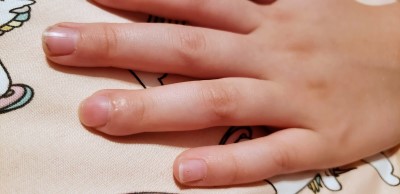Hi friends,
I hope you’re enjoying the tail end of summer with your friends and family! With school starting for many, this can be a hectic time of year.
I’ve got kids starting college classes, the younger ones dragging their feet a bit with homeschool subjects and my third is now an adult and leaving soon on a self-funded two year mission trip! (I’ll add some pics next week.) Crazy times, here!
Soon, we’ll have just three kids at home, which may seem like a lot to many of you, but feels so quiet to us after raising six rowdy homeschoolers.
Any tips on best practices for staying connected with adult children? Just send them my way, since this is new for me! 🙂
On to my health tip (warning – medically graphic. Please skip if this bothers you):
This is the kind of information you don’t want to be looking up in the middle of an emergency, like I did, when my daughter lost the tip of her finger in a door. Preserving the body part correctly is a simple process and useful to know in advance.
Back story:
I injured a finger badly in a car door as a child and often cautioned my children not to slam doors or fight over opening and shutting doors.
One evening, I heard a blood-curdling scream from upstairs, followed by a panicked yell from an older voice.
I knew instantly it wasn’t good. You probably know what that sounds like.
My husband and I raced up the stairs to find my third son holding his hysterical four-year-old sister with a bloody left hand.
Apparently, during bedtime shenanigans, he had picked her up to carry her, struggling, out of the boys’ room and into the hallway so they could go to bed. At the last moment, she stretched back toward the open doorway and grabbed ahold of the doorjamb on the hinge side.
Inside the room, without looking, a frustrated younger brother, slammed the door shut a split second later.
The door took the tip of her third finger off, including the nail and a small sliver of the bone.
As my son frantically explained what happened, my husband took her while I grabbed clean paper towels to apply pressure to stop the bleeding. (Guess I should do a how-to handle emergency bleeding in a future newsletter)
My mind raced, trying to decide what to do before racing off to the hospital. And what about the finger tip? Could it be reattached? Should we bring it with us? Or just leave it?
I vaguely remembered something from medical school about keeping it moist and cold, but not much else. I did the fastest Google search of my life, while my husband worked to keep her calm.
Here’s what you want to know so you can skip the ‘Google’ step in a similar emergency:
- Moisten a clean cloth, paper towel, gauze, etc. with a saline solution (contact solution is great), if you have it. Otherwise, use distilled water or the cleanest water you have. Think damp but not dripping.
- Wrap the body part in the clean, damp cloth/towel and seal it in a plastic baggie.
- Place that baggie in a second baggie you fill with ice.
- Bring it to the hospital with you.
That’s it.
You don’t want to put the body part directly into water – think of how your hands swell after too long in the bath. But you also don’t want it to dry out. The cold helps keep the tissue from degrading.
Unfortunately, reattaching fingers and toes often comes with a lot more complications that learning to live without the finger. But sometimes it works out. Plus, there is fascinating information about using leeches to help with the swelling after reattachment.
In our case, the small fingertip was reattached successfully and the nail bed realigned. The surgeon explained it might not take, but would function as a ‘living bandage’ as it healed.
In the end, her fingertip regrew successfully underneath and has full sensation and function now, though the repaired nailbed ended up slight claw-shaped.

The kids pay better attention now when I insist no one slams doors!
Hopefully this is information you never need to know in the future!
______________________
Misty’s Writing Update:
I decided to try an experiment this week.
After working on the detailed outline for my new litrpg/fantasy series, I couldn’t figure out how best to start the story, which then hampered my ability to rough in the following chapters.
Now, I’m thinking of setting the outlining aside for a bit and writing two or three different first chapters, just to see what happens.
Maybe I’ll have some friends read them and pick their favorite.
My other idea is to reread the first chapters of some of my favorite books in the genre and jot down notes on what parts I like best. Then I’ll make sure I’m doing something similar plot-wise in my first chapter.
I’m thinking that just jumping back into writing, like flinging myself into a cold pool without all the dithering, might be the way to go right now. I’ve been out of the writing game for too long and feel rusty.
Wish me luck, and I’ll let you know how it goes
You’re the best!
— Misty 🙂
p.s The content on this post is for informational or educational purposes only, and does not substitute professional medical advice or consultations with healthcare professionals.

Recent Comments